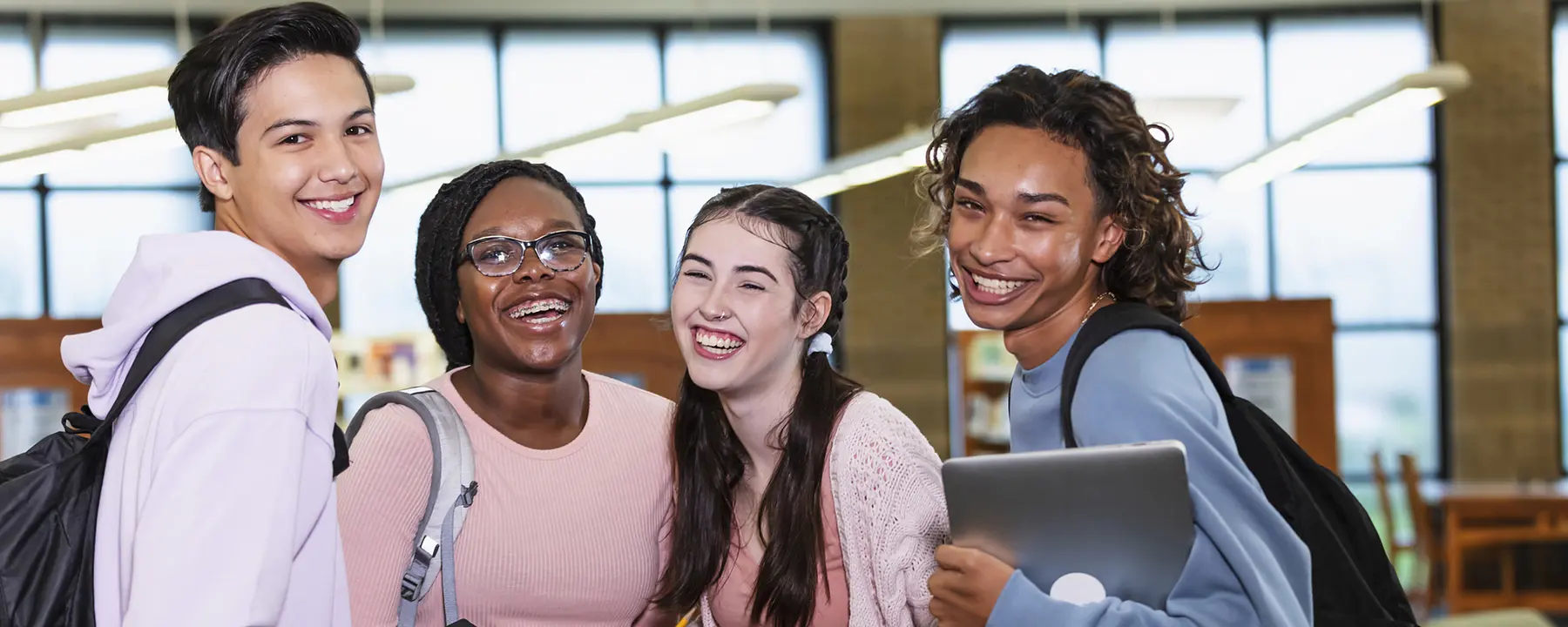Studying the experiences of high school students
Objective
To track the critical transitions experienced by young adults, as they progress through high school to postsecondary education and into the world of work.
Approach
RTI International collected data from 9th grade students and their families, teachers, school administrators, and counselors. Using school-based equipment, the research team was able to monitor student data in real time. RTI will follow up with these students in spring 2026 when most of the students are in 12th grade.
Impact
The High School and Beyond Longitudinal Study of 2022 (HS&B:22) is providing critical insights that will help educators, parents, researchers, and policymakers better understand the factors that contribute to student success. In response to COVID-19, the team pivoted to new, more flexible, and inclusive data collection modes.
The time students spend in high school marks a transition into the rest of their lives. The choices they make during this time impact their future education, careers, and lives. In making these decisions about what’s next after high school, students are often influenced by their parents, peers, teachers, and other school staff.
To account for these influences and better understand students’ experiences during and after high school, the U.S. Department of Education’s National Center for Education Statistics (NCES) is conducting HS&B:22.
HS&B:22, the successor to the High School Longitudinal Study of 2009, is the latest in a series of nationally representative longitudinal studies looking at high school students’ educational experiences. As the data collector for HS&B:22, RTI implemented new, innovative approaches to increase flexibility and inclusiveness. Using school-based equipment enabled the research team to monitor student data in real time and new data collection methods, such as remote and virtual synchronous administration, maximized student and school participation. These data will help educators, parents, researchers, and policymakers better understand the factors that contribute to student success and can be used to improve high school educational experiences for the current generation and beyond.
Surveying High School Students, Families, and School Staff
HS&B:22 surveyed 9th grade students and their families, teachers, school administrators, and school counselors to provide a baseline measure for student success. Those students will be contacted again in 12th grade, which will provide a better picture of students’ pathways through and beyond high school.
HS&B:22 is longitudinal and follows the same students over time. Individual measurements (e.g., transcripts, assessments and surveys of students, and surveys of their parents, teachers, and other school staff) were built into the study design to look at student performance over time, high school diploma attainment, and choices around jobs and postsecondary education. These longitudinal data provide rich context around students’ experiences as they learn and grow and give NCES insights into the academic experiences of students and the impact of household situations and other factors on student outcomes over time.
Testing New Modes of High School Student Data Collection
Data collection for HS&B:22 was originally planned for fall 2020. However, when the COVID-19 pandemic closed in-person school buildings, data collection was postponed until the 2022–2023 academic year.
To ensure that the data remained nationally representative and continued to track students’ experiences accurately and inclusively, the research team shifted how the survey was designed and executed. Recognizing that students’ opportunity to learn was compromised during the pandemic, new survey content was added to measure the impacts of COVID-19.
Three different data collection modes were used to give all students the opportunity to participate, whether in person or virtually:
- In-person Group Administration: An RTI facilitator was sent to schools with Chromebooks and equipment to establish a closed network. In a group setting, students were provided login information to participate on the Chromebooks via a wireless connection to a server on the facilitator’s computer. Facilitators transmitted the data securely at the end of each session. These in-school sessions were the primary mode of data collection.
- Remote Individual Administration: Students completed the session remotely in an individual session using their own device. Login information was sent to students to participate on their own time. This mode was offered to those who missed the in-school session.
- Virtual Synchronous Group Administration: School staff convened their students in a group setting at the school and attended a Zoom session led by an RTI facilitator. The facilitator used individual breakout rooms to provide students with their login information. Students participated using school devices. These cost-effective sessions enabled schools in remote settings to participate in the study and provided an alternate option for makeup sessions.
Informing More Inclusive High School Student Data Collection
HS&B:22 provides critical insights that will help educators, parents, researchers, and policymakers better understand the factors that contribute to student success. Moving forward, it will be essential to continue exploring new ways for schools to engage in data collection, to ensure that the data collected from students, teachers, and families are representative, accounting for potential differences in the sample at the student and school levels. For example, the student session includes an English language screener and a Spanish version of the survey to enable English Learner students to participate.
The research team will continue to use new, flexible data collection modes (e.g., delivering surveys remotely) to increase inclusivity and ensure that the data collected represent as many students as possible. In spring 2024, a field test is enabling RTI to refine procedures and content for the study. The spring 2026 follow-up of the 2022-2023 ninth graders will provide additional insights into high school students’ experiences and what they need to succeed in high school and beyond.
Learn more about the previous study, HSLS:09
Read More- National Center for Education Statistics (NCES)


